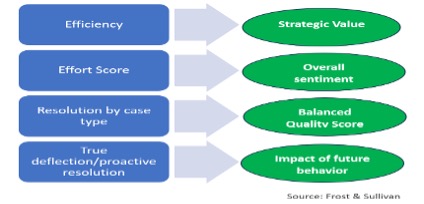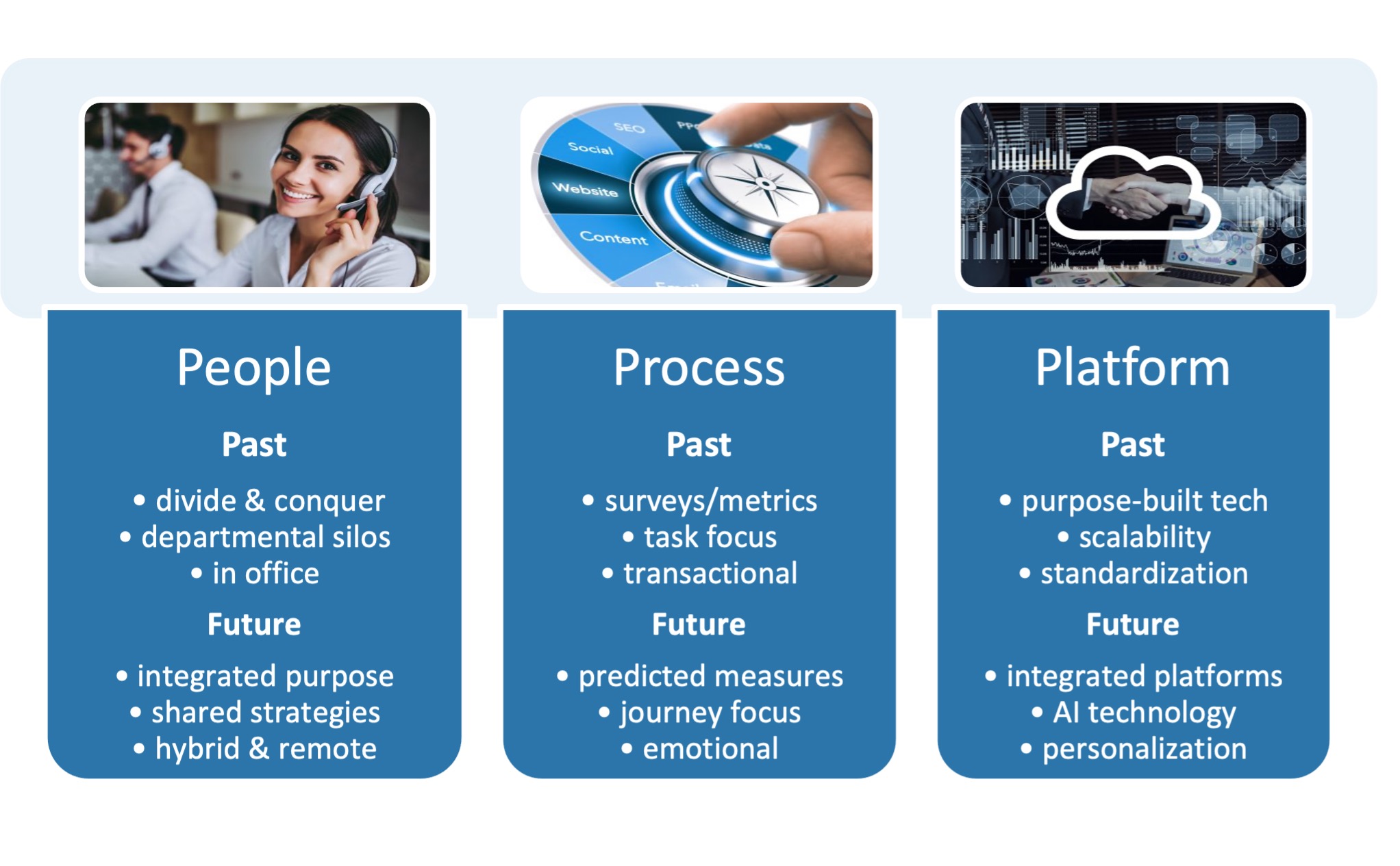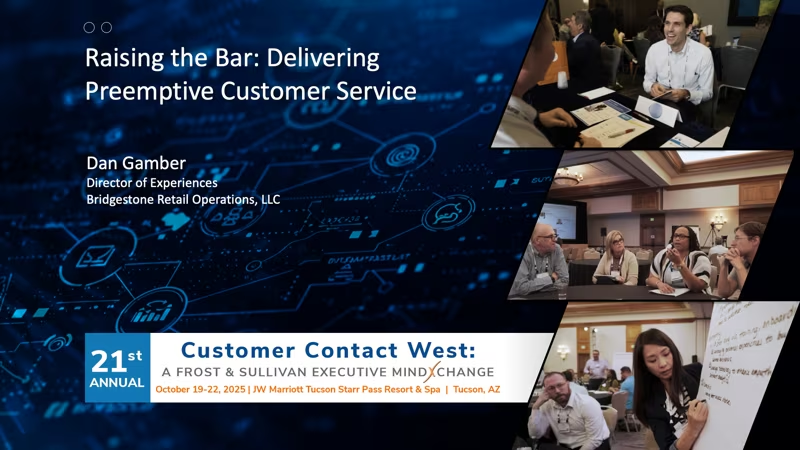2025’s Customer Contact East: A Frost & Sullivan Executive MindXchange provided valuable insights into navigating the evolving customer experience (CX) landscape. This year’s key takeaways emphasize the importance of returning to basics to preserve a company’s core essence amid ongoing digital transformation, geopolitical chaos, and technology disruption. Think of this transformation as moving to a new home, prompting a reevaluation of what is truly necessary and what can be left behind.
While traditional principles still hold strong, they have been adapted to meet the needs of today’s diverse customer base, consisting of five generations, with 27% being Gen Z.
In today’s CX environment, to effectively engage customers, companies should:
– Listen to customer feedback. Critical initiatives include administering voice of customer (VoC) surveys, monitoring social media, and gathering employee feedback. What’s changing? Data is not valuable without analytics capabilities, which help businesses track trends, make better decisions, adjust to subtle shifts in the market, and stay ahead of the competition.
– Personalize interactions, products, and services. Customers have always liked to feel special. What’s changing? With AI, hyper-personalization is now achievable, allowing for more accurate predictions of customer needs and wants, enabling proactivity rather than simply reactivity, and more rapid creation of tangible business opportunities.
– Automate business processes and interactions to reduce costs. Contact centers strive to make simple tasks quick and efficient while ensuring that complex processes are managed effectively. What’s changing? AI solutions must facilitate escalations from bots to agents seamlessly and swiftly, providing all the necessary information for agents to resolve issues quickly. Too often, customers are stuck with bots, with limited or no access to a live agent.
– Simplify processes and interactions to decrease customer effort. Easy-to-implement and use tools are paramount to increasing the adoption of the latest CX technologies. What’s changing? Almost 40% of businesses cite customer unwillingness to adopt new channels and the training required for employees on new applications as significant roadblocks for adoption.[1]
– Empower employees to improve customer experiences. Contact centers strive to automate simple tasks while saving complex ones for agents. What’s changing? Beyond having the tools and data on hand and being given the authority to make decisions on the fly to handle these complex calls effectively, agents must also have the skills and tools to be empathetic. When agents show they care, they can transform even the most frustrated customer into a loyal one by addressing their grievances and providing solutions. Achieving this starts with hiring the right agents, followed by simulated training, so they can continually handle demanding customers and inquiries.
– Delight customers and foster brand loyalty. Companies have long addressed customer pain points and delivered unexpected perks such as upgrades and discounts, to foster customer loyalty. In fact, 73% of businesses consider improving brand loyalty a top goal in 2025. What’s changing? Companies must go beyond fixing what’s wrong when customers are frustrated and understand “the why” of customer frustration. As Darren Stavely, Chief Operating Officer of Resolvion, put it, “Make the customer the hero, not the villain.”
– Cultivate collaboration and trust. Developing and maintaining customer trust is always pivotal to brand loyalty, with social media amplifying this obligation. What’s changing? By anticipating and managing customer expectations, addressing concerns before they escalate, and empowering agents to prioritize what matters most, businesses can improve customer retention. First-contact resolution is a key measure of successful CX interactions.
– Align EX, CX, and BX Reaps Greater Benefits– By empowering employees, understanding customer needs, and creating memorable brand experiences, companies can foster loyalty, reduce turnover, increase revenue, and ultimately achieve sustained success. As businesses navigate a complex and dynamic landscape, integrating these three critical dimensions will be essential for long-term viability and growth.
Nate Brown, Head of CX Advisory, Metric Sherpa, astutely stated, “Make the quick parts quick and the slow parts meaningful.” He explained how measuring success is changing as well:

Ultimately, the goal is to create memorable experiences that make customers feel valued and appreciated, improving brand loyalty. Shift from focusing on traditional KPIs, such as average handle times that only benefit companies in the short term, to analytics that enable businesses to understand customer sentiment and future behavior helps businesses to thrive in the long term.
Navigating the Surge of AI-infused CX Capabilities – What will be Table Stakes for Contact Centers?
It seems like every organization is eager to adopt AI to achieve the goals of improving CX, EX, and BX. However, simply having an AI solution is not a guarantee of success. The investment required to implement such a solution varies significantly, influenced by many factors, such as sophistication and training. Proper execution is essential to realize its potential.
MQ Qureshi, Head of Direct-to-Consumer Strategy & Sales, Ford Motor Company, suggests companies begin with understanding their position with self-insight (what do we truly know about ourselves?), customer Insight (what do we understand about our customers), and knowledge application (how can we effectively use this knowledge?). He advises, “It’s crucial not to rely solely on AI for information; proactive field engagement is necessary. “
Employee Engagement
The importance of employee engagement in enhancing business performance is widely accepted. A survey conducted by Frost & Sullivan demonstrated that companies with more employee engagement initiatives have higher agent retention rates and greater revenue growth.
Jaysa Boyer, Head, Employer Engagement, The Ultimate Medical Academy, contends, “Spending time on work you love can reduce burnout, and creating a comprehensive structure for career progression is vital.” Employees seek flexibility, training, and trust in their roles, alongside having the ability to problem-solve and address customer needs.
Developing Rising Stars
Bobby Thompson, Director of Operations, Beazer Homes, stressed the importance of investing in leadership development as a long-term strategy to drive innovation, build resilience, foster a positive culture, and ensure continuity in leadership.
Rising stars are high-potential, high-performance individuals with leadership qualities, learning agility, and adaptability. They take initiative, have emotional intelligence, are coachable, think strategically, and most importantly, deliver results.
He recommends using tools such as 360° feedback, performance reviews, potential assessments, and input from peers and managers to create personalized growth roadmaps. Developing a culture that sparks innovative thinking, provides psychological safety, fosters collaboration, and ensures transparency and inclusion.
Improving Employee Retention
While showcasing career path success stories, encouraging cross-department moves, supporting lateral growth, and celebrating promotions are not new initiatives, they continue to be valuable ways to improve retention.
Arretta Stivers, Former Director of Client Success, realtor.com, takes the idea of enabling career mobility up a notch. She suggests investing in role evolution, rather than simply promoting agents. Frost & Sullivan has been using the term “professional” agents as the role evolves to one that can handle increasingly complex issues, often with empathy. Stivers says, “The cost of replacing an employee can be up to twice their annual salary, and the hidden cost and real loss is institutional knowledge and momentum.”
The Evolution of People, Processes, and Technologies
Sean Albertson, the Founder & CEO of CX4ROCKS, identified how the three pillars of evolution (people, process, and platform) are changing.

These changes further illustrate how contact centers must change to meet today’s customer needs. The future requires more integration, flexibility, collaboration, predictions, and personalization.
Call to Action
Change is happening and accelerating – the CX industry must be agile, flexible, and perpetually ready to embrace change. Technology must go hand in hand with effective management skills; one cannot help a company succeed without the other. What can management do to make transformation easier for its staff?
- Get your organization ready for continuous change and set that as an expectation
- Make change easily digestible for people – document what is happening and what will happen, and address it weekly with all stakeholders, so it does not feel overwhelming for the staff. Change is more straightforward to grasp in smaller bites
- Get people excited about the changes! Demonstrate how it will help them perform better and reach their career objectives
- Find champions to provide input during implementation phases, overcome obstacles in the changing environment, and lead others to utilize the tools when fully rolled out
The accelerating pace of change emphasizes the need for organizations to align their people, processes, and technologies to drive sustainable change.
- Ensure employees understand how corporate strategy applies to them by seeking their input
- Refresh outdated processes by returning to fundamental principles
- Enable technologies to support, not just replace, existing processes to prevent misalignment and maximize value
- Drive collective measurement of success, encouraging managers to achieve their own objectives
- Focus on employee engagement, because it is directly related to retention and revenue growth
This event brought a lot of new ideas forward, making it easier to visualize where the contact center industry is headed.
[1] Frost & Sullivan Annual Contact Center End User Survey, 2024
Alpa Shah, Global Vice President at Frost & Sullivan, has vast professional and volunteer experience in developing business and organization strategies; analyzing product, regional, and vertical markets; planning and executing events; sales and marketing; writing growth opportunity insights; and, most importantly, creating and inspiring teams to be best in class. Her current area of focus is on CX; she has also worked on projects covering technologies such as UC and mobile and wireless.



